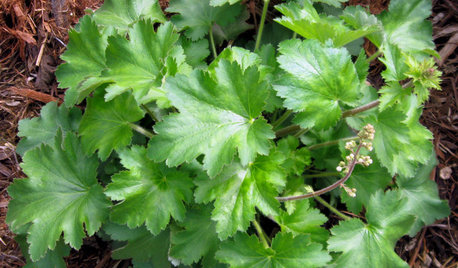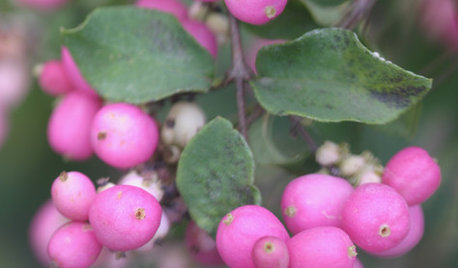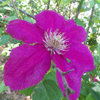Planting under trees and shrubs
bonniein
15 years ago
Related Stories

GARDENING GUIDESPrunus Virginiana Thrives Under Deciduous Trees
Plant chokecherry for showy white flowers favored by native bees in spring, and to provide nesting habitat and food for birds
Full Story
TREESHow to Buy Healthy Trees and Shrubs
A healthy young plant with a strong form is more likely to do well in your yard. Here’s what to look for at the nursery
Full Story
GARDENING GUIDES8 Native Shrubs for Year-Round Bird Feeding
It’s not just about berries. These plants provide insects for birds and seasonal interest for gardeners
Full Story
GARDENING GUIDESGreat Design Plant: Island Alumroot
Shade tolerance and resilience make this California native a natural for planting under oaks and other canopy trees
Full Story
LANDSCAPE DESIGN5 Berry-licious Shrubs to Plant Now for Winter Interest
Showy color during snow season? You bet. These shrubs will wake up a garden with colorful berries when other plants are asleep
Full Story
GARDENING GUIDES8 Deer-Resistant Elegant Evergreen Shrubs to Plant This Fall
Who knew that such beautiful shrubs could be deer-resistant?
Full Story
FALL GARDENING9 Deer-Resistant Flowering Shrubs to Plant This Fall
These exquisite shrubs will attract your attention but won’t tempt the deer that roam your neighborhood at night
Full Story
TREESGreat Design Plant: Cascalote Tree for Sunny Southwestern Style
Enjoy lovely yellow flower spikes in fall and winter with this drought-resistant tree
Full Story
GARDENING GUIDESHow to Prune Your Flowering Shrubs for the Best Blooms
Less is often more when it comes to properly pruning flowering shrubs. Here’s what to do and why
Full Story
GARDENING GUIDESGreat Design Plant: Sambucus Nigra
Common elderberry is a highly adaptable shrub from the eastern U.S., with berries galore for wildlife and humans alike
Full Story






nckvilledudes
bonnieinOriginal Author
Related Professionals
Marco Island Landscape Architects & Landscape Designers · Richmond Heights Landscape Architects & Landscape Designers · Arlington Landscape Contractors · Edmond Landscape Contractors · Bristol Landscape Contractors · Cincinnati Landscape Contractors · Dunwoody Landscape Contractors · Gresham Landscape Contractors · Lewisville Landscape Contractors · New Berlin Landscape Contractors · North Chicago Landscape Contractors · Vancouver Landscape Contractors · Wethersfield Landscape Contractors · Irvington Landscape Contractors · Northlake Landscape Contractorsalina_1
nckvilledudes
gardengal48 (PNW Z8/9)
nckvilledudes
alina_1
bonnieinOriginal Author
nckvilledudes